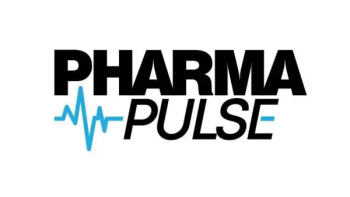As history has shown, being able to act fast when it comes to outpatient treatment for a COVID-19 infection provide a high success rate for decreasing the risk of severe disease and hospitalization, especially for individuals that are at high risk for severe issues.1
Emergency use of COVID-19 antivirals and government subsidies
In December 2021, the oral therapies nirmatrelvir/ritonavir (referred to as nirmatrelvir) and molnupiravir were granted emergency use authorization in the United States for outpatient treatment of individuals at high risk for developing severe COVID-19. In hopes of increasing patient access, these therapies were subsidized by the federal government.
Persistent inequities in COVID-19 outpatient treatment access
However, despite these medications being both available and affordable, racial, ethnic, and socioeconomic disparities came to light when it came to accessing COVID-19 treatment; COVID-19 itself has also caused individuals to face loneliness and depression.2 Prior studies have shown that individuals at the greatest risk including those from lower-income backgrounds and racial and ethnic minority groups; they have also been the least likely to receive outpatient care, demonstrating an issue for other pandemic responses.1
- Despite widespread availability and federal subsidies, Black and Latino patients were significantly less likely than White patients to receive outpatient COVID-19 antiviral prescriptions.
- About 53% of the treatment gap for Black patients and 39% for Latino patients was attributed to factors like reduced access to antigen testing and virtual care during individual healthcare visits.
- The remaining disparities are linked to broader systemic issues—including social and public health determinants—highlighting the need for long-term policy and infrastructure solutions to ensure equitable treatment access.
Study design: Exploring the root of inequities in treatment distribution
Therefore, in a cross-sectional study published in JAMA Network Open,1 investigators sought to figure out how broader system factors compare to what happens during individual doctor visits, when it comes to explaining racial and ethnic differences in outpatient COVID-19 antiviral prescriptions.
The study used electronic health record (EHR) data from a New England academic health system. The full cohort featured patients 18 years of age or older who received an order for a COVID-19 test in an outpatient clinic or emergency department between the timeframe of Jan. 1, 2022, and Jan. 31, 2024, up until receiving their first positive test result.
Sample selection and data exclusions
The investigators analyzed patients with positive COVID-19 test results, using only the first positive result if patients had multiple ones; doing so confirmed that the selected sample consisted of those who were most likely eligible to receive outpatient treatment. It’s also important to note that individuals who received prescriptions without a documented test (who were assumed to have COVID-19) were not include in this analysis due to lack of care information. The sample was then narrowed down further to outpatient sites that had ordered at least 25 COVID-19 tests during the study period, in order to concentrate on locations that provided a level of consistent COVID-19 care. As a result, the final sample broken down into 530 clinical sites, mainly consisting of primary care and urgent care practices.
Findings: Quantifying the racial and ethnic gaps
Overall, this sample consisted of 201,964 patients with positive COVID-19 test results (mean [SD] age, 54.0 [18.2] years; 64.6% female; 0.1% identified as American Indian or Alaska Native, 3.7% as Black, 6.5% as Hispanic or Latino, 79.0% as White, 1.1% as other, and 4.7% as unknown race and ethnicity). A proportion of 66.4% of them were commercially insured (66.4%). Unadjusted prescription rates were 10.8 percentage points (95% confidence interval, or CI, 9.7-11.8 percentage points) lower for Black compared with White patients and 9.8 percentage points (95% CI, 9.0-10.6 percentage points) lower for Latino patients.
Black and Latino patients were less likely than White patients to be identified with in-clinic antigen tests (−8.4 percentage points [95% CI, −9.2 to −7.5 percentage points] and −7.7 percentage points [95% CI, −8.3 to −7.0 percentage points], respectively), by home antigen tests (−10.3 percentage points [95% CI, −11.5 to −9.2 percentage points] and −14.1 percentage points [95% CI, −14.9 to −13.2 percentage points], respectively), or to have been virtually given care (−16.2 percentage points [95% CI, −17.3 to −15.0 percentage points] and −18.4 percentage points [95% CI, −19.3 to −17.5 percentage points], respectively). The differences in prescription rates were explained by measurable factors, with encounter-level variables accounting for 53% of the gap for Black patients and 39% for Latino patients.
Conclusion: Addressing structural and clinical inequities
As a result, the investigators concluded that “In this cross-sectional study, we observed a large racial and ethnic disparity in outpatient COVID-19 treatment in a single healthcare system and found that approximately half of the disparity was explained by encounter-level care delivery factors, such as access to rapid antigen tests and virtual care.
“The approach taken in this study may help inform targeted, local interventions to decrease disparities in the outpatient treatment of COVID-19 in individual healthcare systems. For example, intervention at the practice level, such as policies to increase accessibility of home tests, virtual visits, and patient portal messaging, may improve these disparities, particularly for individuals seen at clinics serving a high percentage of Black and Latino patients. This work also highlights the multifaceted upstream nature of this inequity. Half of the racial and ethnic prescription gap was explained by clinical, epidemiologic, and public health determinant factors, all of which are influenced by larger social and structural determinants of health and would require larger, longer-term intervention to decrease this disparity.”
References
1. Bromley-Dulfano R, Barnett ML. Racial Inequities and Access to COVID-19 Treatment. JAMA Netw Open. 2025;8(7):e2518459. doi:10.1001/jamanetworkopen.2025.18459
2. Saraceno N. The Connection Between Virtual Care and Language Barriers. Pharmaceutical Commerce. June 10, 2025. Accessed July 11, 2025. https://www.pharmaceuticalcommerce.com/view/connection-between-virtual-care-language-barriers






